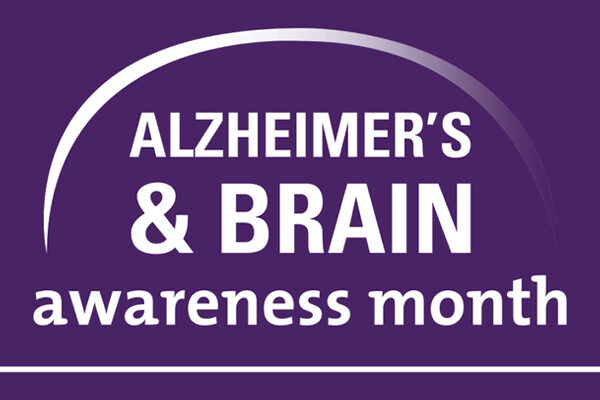Last Updated on May 27, 2022
Overview:
While straining yourself, if you find it difficult to breathe and experience coughing fits, there might be 2 possible causes: Asthma or COPD (Chronic Obstructive Pulmonary Disease).
It might be difficult to distinguish between asthma and COPD due to their many similarities. However, your doctor can determine if one of these chronic conditions is the cause of your poor health after considering your symptoms, medical history, physical examination, and medical findings.
Asthma and COPD are both respiratory diseases with different causative factors. In this blog, we will majorly be discussing COPD vs Asthma; what makes them different from each other, and the related aspects of these respiratory diseases. To learn more about Asthma and COPD, explore Pulmonology Clinical Trials in Michigan near you to better understand these respiratory conditions.
COPD vs Asthma:
What is Asthma?
Asthma is the narrowing of airways that causes swelling and coughing of extra mucus or phlegm. The characteristic feature of Asthma is the whistling sound (wheezing) because of the inability to breathe fully.
What are the symptoms of Asthma?
Some of the symptoms of Asthma include:
- Shortness of breath,
- Chest tightness,
- Wheezing sound,
- Trouble sleeping, and
- Coughing increased with respiratory virus
How is Asthma diagnosed?
Asthma, like other diseases, is diagnosed by a series of tests, including medical history, physical examination, and lung tests.
What are the causes of Asthma?
Asthma has no known cause. However, certain triggers can irritate the airways resulting in swelling and inflammation of the airways. Some of the causes include:
- Pollution,
- Genetics, and
- Hygiene levels
Who is at Risk?
Some of the risk factors of Asthma Include:
- Certain allergies like food, pollen, etc.,
- Family history, and
- History of Bronchitis
What triggers Asthma attacks?
The Asthma triggers include:
- Food allergy,
- Certain medicines,
- Weather: dusty weather can aggravate the condition, and
- Fumes and chemicals
What is work-related Asthma?
Sometimes exposure to certain chemicals in the workplace can cause occupational Asthma. Some of the common causes of occupational asthma include:
- Isocyanates
- Colophony
- Latex
- Flour and grain dust
- Wood dust
- Animals
Asthma and Allergy go hand in hand:
The chemicals given off by the immune system lead to allergy symptoms. In some cases, this same reaction triggers the airway passage causing Asthma symptoms.
Management Of Asthma: How?

Asthma is a chronic condition that has no cure but can be managed and prevented if appropriate measures are taken. It is important to understand your condition and identify triggers and then work on techniques to avoid exposure to those triggers. If you experience a flare-up, you might need to take the prescribed medicines.
The right medication depends on several factors including age, symptoms, history, and Asthma triggers. The usual treatment involves the use of a bronchodilator or an inhaler. A bronchodilator works by quickly relaxing your airway muscles, hence, also known as a rescue inhaler.
There are different types of inhalers depending on the duration of action. These include long-acting and short-acting inhalers. The rescue inhalers are short-acting and they are used to provide quick relief to an Asthma attack. Long-acting inhalers work for a longer duration, relieving symptoms for up to 12 hours. This type of inhaler is taken every day to prevent Asthma attacks.
Other quick-relief medications include oral and intravenous corticosteroids, anticholinergic agents, and beta-agonists. They all aid in quickly relieving the symptoms of Asthma including chest tightness, difficulty breathing, and so on.
Chronic Obstructive Pulmonary Disorder:
Chronic Obstructive Pulmonary Disorder or COPD is a group of respiratory problems that cause blockage of airways resulting in breathing-related problems. COPD includes two other respiratory diseases. Emphysema and Chronic Bronchitis. Emphysema is the destruction of air sacs whereas Chronic Bronchitis is coughing excessive mucus or phlegm due to inflamed airways.
In the case of COPD vs Asthma, there is excessive swelling and narrowing of the airways in Asthma. Mucus production in both respiratory conditions is common, however, in the case of COPD, there is extreme production of mucus as compared to Asthma.
Surprisingly, COPD is more prevalent in women than men. Similarly, female smokers have a high rate of mortality as compared to their male counterparts.
What are the symptoms of COPD?
Some of the prominent symptoms of COPD include:
- Excessive mucus,
- Cough,
- Shortness o breath, and
- Trouble breathing
How Is COPD diagnosed?
The most common method to diagnose COPD is through spirometry. The test is also known as Pulmonary Function Test. this test is relatively easy and painless, you just have to exhale forcefully into a tube linked to the machine.
What causes COPD?
Some of the causes of COPD include:
- Smoking tobacco,
- Secondhand smoking, and
- Alpha 1 deficiency
What are the Risks?
Risk factors associated with COPD are:
- Smoking tobacco,
- Fumes,
- Age (more common in old age),
- Poor nutrition, and
- Occupational hazards
What triggers COPD?
The triggering factors of COPD are more or less the same as Asthma. It includes:
- Exposure to secondhand smoke,
- Air pollution,
- Exposure to chemicals and fumes in the workplace, and
- History of respiratory infections
Management of COPD: How?

COPD is a manageable condition. Many people living with benign symptoms of COPD should know that these can be prevented by exercising healthy lifestyle changes and preventive measures. Despite COPD being manageable, there is still an increased chance of developing lung cancer with this condition over time. Some of the management options for COPD include:
- Smoking cessation: Smoking is the leading cause of respiratory diseases like Asthma and COPD. Regardless, smoking is not easy to quit. If you are having difficulty quitting smoking, you might want to switch to other options that are less detrimental like nicotine patches and other medications.
- Medications: long and short-acting inhalers, combination inhalers, oral steroids, etc.
- Lung therapies: may include oxygen therapy and pulmonary rehabilitation programs.
COPD vs Asthma: What differentiates one from the other?
Asthma and COPD are both chronic inflammatory respiratory conditions but the major difference is in Asthma triggers, that cause wheezing attacks whereas the symptoms of COPD are constant with excessive mucus. As previously discussed, another way to differentiate between both the conditions is through Spirometry.
The test measures the forced expiratory volume and forced vital capacity in 1 second to diagnose Asthma and COPD. It helps to distinguish between the two and also diagnoses the stage of the disease so that the treatment plan can be formulated accordingly.
The breathing pattern returns to normal after an Asthma attack whereas the breathing after a COPD attack does not get better. Another distinguishing feature of COPD is cyanosis which means the blueness of nail beds or lips due to low oxygen supply.
Asthma can develop at any age but COPD is a disease for older people. However, it can sometimes be diagnosed in the younger lot as well.
The prognosis for individuals with COPD or Asthma:
COPD is a progressive disease with symptoms worsening from time to time. Therefore the prognosis for COPD patients is not that satisfactory. Whereas Asthma is a comparatively less severe disease with slightly less intense Asthma triggers than COPD, consequently, its prognosis is far better than COPD if it is managed appropriately.
The Outlook:
Although both asthma and COPD are concerning diseases, with proper care and management, they can be prevented. It is essential to be aware of the triggers and adopt ways to avoid those triggers so that the condition does not worsen and is still manageable.
Many Clinical Research Organizations in the USA are working to find potential treatment options for Asthma and COPD. If you are unsure about your condition and the potential treatment choices, try reaching out to clinical research organizations working on improving the quality of life with better treatment modalities.




